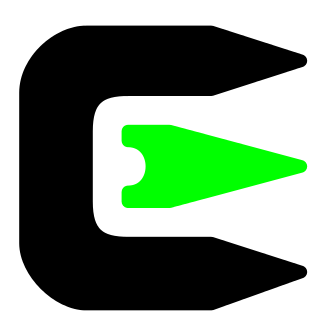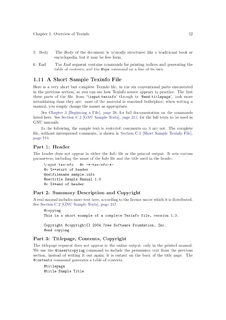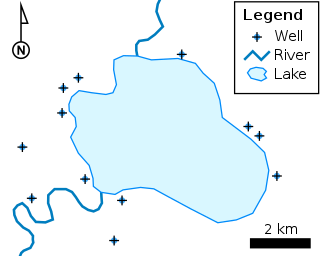
Cygwin is a POSIX-compatible environment that runs natively on Microsoft Windows. Its goal is to allow programs of Unix-like systems to be recompiled and run natively on Windows with minimal source code modifications by providing them with the same underlying POSIX API they would expect in those systems.
The GNU Compiler Collection (GCC) is a compiler system produced by the GNU Project supporting various programming languages. GCC is a key component of the GNU toolchain and the standard compiler for most Unix-like operating systems. The Free Software Foundation (FSF) distributes GCC under the GNU General Public License. GCC has played an important role in the growth of free software, as both a tool and an example.

In mathematics, permutation is the act of arranging the members of a set into a sequence or order, or, if the set is already ordered, rearranging (reordering) its elements—a process called permuting. Permutations differ from combinations, which are selections of some members of a set regardless of order. For example, written as tuples, there are six permutations of the set {1,2,3}, namely: (1,2,3), (1,3,2), (2,1,3), (2,3,1), (3,1,2), and (3,2,1). These are all the possible orderings of this three-element set. Anagrams of words whose letters are different are also permutations: the letters are already ordered in the original word, and the anagram is a reordering of the letters. The study of permutations of finite sets is an important topic in the fields of combinatorics and group theory.
In computer science, an interpreter is a computer program that directly executes, i.e. performs instructions written in a programming or scripting language, without requiring them previously to have been compiled into a machine language program. An interpreter generally uses one of the following strategies for program execution:
- parse the source code and perform its behavior directly;
- translate source code into some efficient intermediate representation and immediately execute this;
- explicitly execute stored precompiled code made by a compiler which is part of the interpreter system.
CiteSeerx is a public search engine and digital library for scientific and academic papers, primarily in the fields of computer and information science. CiteSeer holds a United States patent # 6289342, titled "Autonomous citation indexing and literature browsing using citation context," granted on September 11, 2001. Stephen R. Lawrence, C. Lee Giles, Kurt D. Bollacker are the inventors of this patent assigned to NEC Laboratories America, Inc. This patent was filed on May 20, 1998, which has its roots (Priority) to January 5, 1998. A continuation patent was also granted to the same inventors and also assigned to NEC Labs on this invention i.e. US Patent # 6738780 granted on May 18, 2004 and was filed on May 16, 2001. CiteSeer is considered as a predecessor of academic search tools such as Google Scholar and Microsoft Academic Search. CiteSeer-like engines and archives usually only harvest documents from publicly available websites and do not crawl publisher websites. For this reason, authors whose documents are freely available are more likely to be represented in the index.

In software development, GNU Automake is a programming tool to automate parts of the compilation process. It eases usual compilation problems. For example, it points to needed dependencies.

Texinfo is a typesetting syntax used for generating documentation in both on-line and printed form with a single source file. It is implemented by a computer program released as free software of the same name, created and made available by the GNU Project from the Free Software Foundation.
In software engineering, the terms front end and back end refer to the separation of concerns between the presentation layer, and the data access layer of a piece of software, or the physical infrastructure or hardware. In the client–server model, the client is usually considered the front end and the server is usually considered the back end, even when some presentation work is actually done on the server itself.
In computer science, a symbol table is a data structure used by a language translator such as a compiler or interpreter, where each identifier in a program's source code is associated with information relating to its declaration or appearance in the source. Symbol table stores the information related about the symbol.

The LLVM compiler infrastructure project is a "collection of modular and reusable compiler and toolchain technologies" used to develop compiler front ends and back ends.
Ctags is a programming tool that generates an index file of names found in source and header files of various programming languages. Depending on the language, functions, variables, class members, macros and so on may be indexed. These tags allow definitions to be quickly and easily located by a text editor or other utility. Alternatively, there is also an output mode that generates a cross reference file, listing information about various names found in a set of language files in human-readable form.

The Initial Graphics Exchange Specification (IGES) is a vendor-neutral file format that allows the digital exchange of information among computer-aided design (CAD) systems.

Maven is a build automation tool used primarily for Java projects.
In the macOS, iOS, NeXTSTEP, and GNUstep programming frameworks, property list files are files that store serialized objects. Property list files use the filename extension .plist, and thus are often referred to as p-list files.

The shapefile format is a popular geospatial vector data format for geographic information system (GIS) software. It is developed and regulated by Esri as a (mostly) open specification for data interoperability among Esri and other GIS software products. The shapefile format can spatially describe vector features: points, lines, and polygons, representing, for example, water wells, rivers, and lakes. Each item usually has attributes that describe it, such as name or temperature.
In the X Window System, the program xwd captures the content of a screen or of a window and optionally saves it into a file.

HelpNDoc is a Windows-based help authoring tool published by French company IBE Software.
Linker or Linkers may refer to:
SAMtools is a set of utilities for interacting with and post-processing short DNA sequence read alignments in the SAM, BAM and CRAM formats, written by Heng Li. These files are generated as output by short read aligners like BWA. Both simple and advanced tools are provided, supporting complex tasks like variant calling and alignment viewing as well as sorting, indexing, data extraction and format conversion. SAM files can be very large, so compression is used to save space. SAM files are human-readable text files, and BAM files are simply their binary equivalent, whilst CRAM files are a restructured column-oriented binary container format. BAM files are typically compressed and more efficient for software to work with than SAM. SAMtools makes it possible to work directly with a compressed BAM file, without having to uncompress the whole file. Additionally, since the format for a SAM/BAM file is somewhat complex - containing reads, references, alignments, quality information, and user-specified annotations - SAMtools reduces the effort needed to use SAM/BAM files by hiding low-level details.









